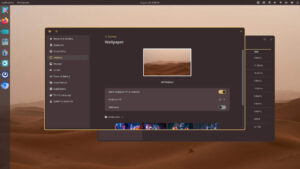A quarter-century ago when SUSE was the cream of the crop, most Linux distros were envious of the YaST configuration tool.

An important piece of Linux history is set to go the way of the passenger pigeon or dodo bird later this year, when SUSE and openSUSE put YaST out to pasture. Widely regarded as a package manager, it’s actually more of a Swiss Army knife configuration tool that can be used to install software, configure hardware, set up networks and servers, and more.
Exactly what it can do might be determined by the year in which you’re using it, as its feature set and role within the SUSE ecosystem have changed over the years. Although not very well known outside SUSE circles these days, from its first appearance in 1995 until SUSE was purchased by Novell in 2004, YaST was one of the reasons why SUSE was considered one of the crown jewels of Linux.
It was also controversial, as it initially shipped with a proprietary license, a practice widely considered forbidden by the GPL.
Indeed, YaST’s nonfree license might explain why, despite is elevated status, SUSE was never widely installed as a desktop in the late ’90s and early 2000s, an era that was ruled by dial-up connections and slow download speeds. This meant that the cottage industry that sprang up to supply inexpensive mail-order CDs of Linux distros couldn’t distribute copies of SUSE’s install disks with YaST onboard, due to copyright considerations.
That ended in 2004 when YaST was finally released under the GPL, but by that time SUSE was owned by the then-failing networking company Novell, which made a deal with Microsoft that put Redmond in the business of distributing SUSE support contracts. That made the distribution unattractive to Linux enthusiasts of the era.
Starting with SUSE’s SLE 16 and openSUSE’s Leap 16, YaST will mainly be a thing of the past, although remnants might remain for a while as features are phased out.
Christine Hall has been a journalist since 1971. In 2001, she began writing a weekly consumer computer column and started covering Linux and FOSS in 2002 after making the switch to GNU/Linux. Follow her on Twitter: @BrideOfLinux






So what are they going to use to replace it? Pulling up a terminal, and using “apt-get” isn’t exactly user-friendly for NOOBs.
zypper is the package manager for the CLI since years, myrtil is the new graphical one. havent looked at it yet.
I will more miss the little tools that help you doing the job you do twice a year (or less) like paritioning a disk or USB stick, setting up users or messing up the network
Based on SUSE communication, some parts of YaST will be ported into Cockpit and Agama.
M*crosoft rules.. say that do you want to say but sh*t appeared.
I tried openSUSE Tumbleweed and really liked it, especially that it was a rolling distro. But I couldn’t get WINE to work even though it installed without a hitch. Kept blowing up when trying to start my application. Never EVER had that problem with any other distro I’ve tried in the past 19 years. So I went back to Debian based distros. They just work!